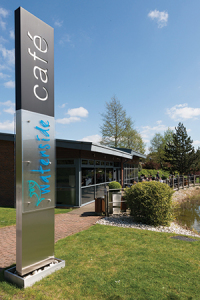 Which came first, the chicken or the egg? As anyone with under-11s in the house will tell you, the answer is – the dinosaur.
Which came first, the chicken or the egg? As anyone with under-11s in the house will tell you, the answer is – the dinosaur.
Alas, not all chicken/egg problems are so easily resolved. Tea or milk first remains a fiercely controversial issue, and whether to crack the pointy end of boiled egg, or round end, was the cause of a famous fictional war in Gulliver’s Travels. For the office property business, there is an equally intractable problem.
It is this: in large-scale developments do you let your offices first, and hope the restaurants, bars and dry cleaners follow of their own accord, attracted by the plentiful customers; or do you fill the ground floors with shops and eateries, and wait for the office occupiers to roll up?
Either option has its merits. Letting the offices first means there are guaranteed customers for the shops and restaurants. Letting the shops and restaurants first means office occupiers know they are not relocating to a social wasteland, the kind of office scheme with high staff turnovers and tumbleweed rolling through the public spaces.
For office developers, those who opt for the chicken/offices first option think the best tactic is to create as much inexpensive animation in their scheme as possible. This might be lots of people, or might be meantime-uses, pop-up shops or big screen shows.
Supporters of the amenities approach (let’s call them Team Egg) take a different view. They think the answer is to let restaurants and shops on lowish rents or longish rent-free periods, so they can open, and then wait patiently, while the office space fills up.
Each side thinks the other has made an understandable error, and is sorry for them. Fortunately, there is a small area of common ground on the use of pop-up shops and meantime-uses.
Kevin Chapman, head of offices at LendLease, is on Team Egg. He thinks the amenities need to go in first, or very quickly, as LendLease’s experience at Stratford’s International Quarter shows. First came the Westfield shopping centre and a host of other amenities; next came the tenants for 1.1m sq ft of office floorspace. Transport for London and the Financial Conduct Authority are among those to have signed up.
Says Chapman: “Any office block needs a base level of amenities otherwise you can’t attract tenants – or it makes it extremely difficult – because tenants have lots of choice of other locations with plenty of amenities. It’s difficult to let offices with zero amenities.”
 Chapman concedes it is the entire neighbourhood – not just the office scheme – that influences occupiers’ perception of local amenities. But the restaurants, shops and bars on-site matter too. “Stratford was accepted as an office location because it had the amenities occupiers needed,” he says.
Chapman concedes it is the entire neighbourhood – not just the office scheme – that influences occupiers’ perception of local amenities. But the restaurants, shops and bars on-site matter too. “Stratford was accepted as an office location because it had the amenities occupiers needed,” he says.
Chapman believes some retail or leisure space could be devoted to pop-up uses, following the pattern set by Argent’s King’s Cross redevelopment. “You can have fun with pop-ups – experiment,” he says. “You can begin to warm up the location.”
However, there is no substitute for real touch-it-and-feel-it amenities, and office occupiers expect no less.
If LendLease is on Team Egg, British Land is on Team Chicken. James Danby, BL’s head of office leasing, is convinced office deals have to be signed first, ahead of amenity tenancies.
“We create spaces, but people create places,” says Danby, providing a neat slogan for his side of the debate. British Land’s experience at Paddington and Regent’s Place has convinced him that offices must come first.
“On office campuses, we try to get office occupiers to take space, then to make that space relevant,” he says.
British Land’s approach to ground-floor retail and leisure space has been to find meantime-uses, and rarely has it been more successful than at the 13-acre Regent’s Place, NW1.
Danby explains: “We knew it would be hard to fill the 5,000 sq ft ground floor restaurant at Brock Street, overlooking the piazza, before the office workers moved in. It was going to be a challenge to get a big restaurateur to move in at that time, so we opened the place as a den. We put in tables, bean bags, lighting, and WiFi and invited people in to use it for lunch or meetings,” he says.
So popular was the uber-funky come-as-you-please lounge that it was featured in a style magazine and used for a fashion sale. “That would have been dead space otherwise,” says Danby. It is now let to London bar group Drake and Morgan and operates as The Refinery.
A big screen showing summer sport, and a series of off-the-wall events including bath-tub racing, help keep the mood lively at Regent’s Place and Paddington ahead of amenity lettings.
The same principle is now being extended to the 45-acre Canada Water scheme following BL’s £135m purchase of the Surrey Quays leisure scheme. While British Land ponders a masterplan – due during 2016 – the site is being warmed by a series of events. This summer it was host to Secret Cinema – a beguiling mix of live-action performance, audience participation and cinema screening – showing The Empire Strikes Back.
“We want to have some fun on that site. It’s not just about practical things like putting down a dry cleaners. We want some excitement,” says Danby.
Bill Page, business space research manager at Legal & General is, at heart, a member of Team Egg and thinks amenities need to come first. But L&G invests in schemes of all kinds, and Page’s conclusion is that – in the end – which comes first depends what the developer (and investor) wants.
“Amenities come first because office occupiers recognise – and developers and investors have recognised, often too late – that an office block is a tool for the recruitment and retention of staff.”
His suggestion is to offer highly subsidised rents (“as much subsidy as it takes,” he says) to ensure good amenities around an office scheme. “And I don’t mean just the usual crowd – a Pret A Manger, a dry cleaners – I mean something more. That could be extended rent-free periods, or help with fit-outs in the first six months when there will be few customers for restaurants and bars.”
Page suggests office developers see their amenity tenants in the same way retail developers see department stores, or leisure developers see cinemas: they aren’t a source of much rental income in their own right, but they make it possible to earn rental income from other parts of the scheme.
Risky and costly, this isn’t a strategy that’s going to appeal to everyone – not least to big investors who won’t stomach risk. Which is why this kind of scheme is perhaps better suited to entrepreneurial developers rather than risk-averse funds.
“Look at what Peter Millican did at King’s Place,” Page says, pointing to the N1 office block’s art gallery and concert halls, not big revenue generators but generators of massive amounts of atmosphere and kudos.
If such cultural baubles are unobtainable, more modest meantime uses could be successful, he says.
“Well-managed meantime-uses can be great, they generate brand identity. But the key is ‘well-managed’ – and this kind of thing makes a difference to viability, although its always hard to show the financial returns on making people happy,” says Page. That said, anything that keeps tenants happy means they are more likely to stay put – and since 70% of the return comes from tenant income, investing in amenities is a smart move.
“We know most successful office schemes have a mix of amenities, and those who didn’t put them in first are having to spend lots to put amenities in later. And it’s easier to get this right first time around,” says Page.
Chicken or egg? Tea or milk first? Round end or pointy end? Offices first or amenities first? You decide.
The 10% rule
Developers generally assume that amenity uses should occupy floorspace to the equivalent of about 10% of the office floorspace. Some developers go a little higher, some a lot lower – it’s all about viability, profit margins, locations and branding.
Out of town conundrum
 Out-of-town office parks are all chicken and no egg. Until recently they had precious few facilities – but according to landlords, golden eggs are being laid on most business parks.
Out-of-town office parks are all chicken and no egg. Until recently they had precious few facilities – but according to landlords, golden eggs are being laid on most business parks.
That was the dilemma at the 75-acre Croxley Green business park, Watford. First developed in the 1980s, the 635,000 sq ft park needed new facilities to survive in the Noughties.
Rob Flavelle, director at owners Columbia Threadneedle asset managers, says: “We wanted to raise the level of comfort, but also to make it entertaining and relaxing. There’s archery, jazz, a summer fête – things which mean its more than just a place to go to work.”
Cafés, gyms and other amenities total 12,000 sq ft – but could grow if an additional 80,000 sq ft of office space is created.










